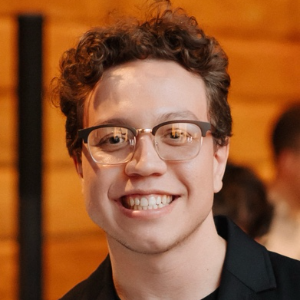Title : Dorsal dysraphism with lipoma (lipomyeloschisis): Case report
Abstract:
Introduction: Neural tube defects (NTDs) are secondary abnormalities during the embryogenic development of the central nervous system (CNS). Between the 17th and the 28th day after fertilization, neurulation happens in two moments: primary and secondary neurulation. Secondary neurulation connects the anterior neuropore (ANP) to the posterior neuropore (PNP) created in the previous moment. Spinal cord dysraphism is an infrequent presentation associated with intramedullary lipomas, with an incidence estimated between 0.45 to 0.6% of spinal cord dysraphism of the posterior herniation of the spinal cord towards the subcutaneous tissue (lipoma). This report details a rare presentation of Lipomyeloschisis in a nine-month-old boy with neurological and urinary symptoms. Accurate and differential diagnosis is crucial for achieving more successful patient diagnosis and outcomes when presented with lactate patients, who are under constant growth, and a lack of developmental changes can be critical.
Case report: A nine-month-old boy with a history of lumbar protuberance since birth, after 7 months, started to present paresthesia, neurological inability to move his lower limbs, and urinary incontinence.
Radiological findings
Pre-operation sagittal MRI evidenced a dorsal herniation of lipoma (heterogeneous and isointense imaging) and medular content (heterogeneous and hyperintense imaging) posterior to the vertebral canal and towards the dorsal region of the body, in between muscles and subcutaneous tissue.
Surgery
Microsurgical resection, with the support of neurophysiological monitoring as guidance, was conducted through an L1-L4 incision to avoid extracting medular content. The procedure was done in Municipal Dr. Mário Gatti’s Hospital (Department of Neurosurgery), Campinas, São Paulo. A mass with a rough appearance, yellowish color, and firm-elastic consistency measuring 11,0x 7,0x 5,0 cm was dissected carefully. Inside this mass was found a piece of undeveloped lumbar bone.
Histology and Immunohistochemical Evaluation
Immunohistochemical examination revealed positive staining for S-100 protein, confirming undifferentiated lipose content without atypia. Microscopic analysis of multiple histological findings confirms the diagnosis of a lipoid lesion originating from intra and extra-sections of the dura.
Post operation
Postoperative MRI images documented the complete resection of the cavernous hemangioma. The patient was followed for 6 months with neurological stabilization and reduced radicular pain sensation.
Discussion: Spinal cord dysraphism associated with a lipoma is a rare presentation of congenital malformations of the spine and spinal cord. Lipomyeloschisis is a subtype of closed. Embryologically, spinal lipomas result from early disjunction between neuroectoderm and cutaneous ectoderm; the surrounding mesenchyme creeps between and adheres to the primitive ependyma, transforming it into fat. Clinical evaluation of patients by the presence of abnormal masses on the dorsal region are early signals diagnosis. Other findings can vary between patients; some with paraparesis, sensory changes, urinary incontinence, and pain are frequently presenting complaints. MRI findings of posterior herniation of lipoma, heterogeneous and isointense signaling associated with medular content, and heterogeneous and hypertensive signaling are components for diagnosis. Early diagnosis is critical for this clinical condition since it is necessary for surgical correction. The sooner it is done, the less functional impact it can generate since, even if the child does not have, until the moment of diagnosis, neurological symptoms suggestive of low spinal dysfunction, this may happen over time. Successful approaches must be at an early stage of life to diminish a significant number of complications.
Conclusion: Lipomieloschysis is a congenital spine and spinal cord malformation created by a neural tube defect. Clinical symptoms are broad, ranging from neurological and urinary. MRI findings are an essential tool for diagnosis and surgical preparation. After diagnosis, surgical repair is necessary even in patients without symptoms since they may appear at any moment in the future.
Keywords: Lipomyeloschisis, Dorsal Dysraphism, Neural tube defect, Spine Surgery, Neurosurgery
Audience Take Away Notes:
Attendees will gain insights into the subtleties of clinical symptoms that often elude the diagnosis of an uncommon neural tube defect. The correlation between radiological imaging and clinical features contributes to the early diagnosis of patients. A potential solution for this medical condition will also be presented, a microsurgical approach, highlighting its distinctive qualities.a




